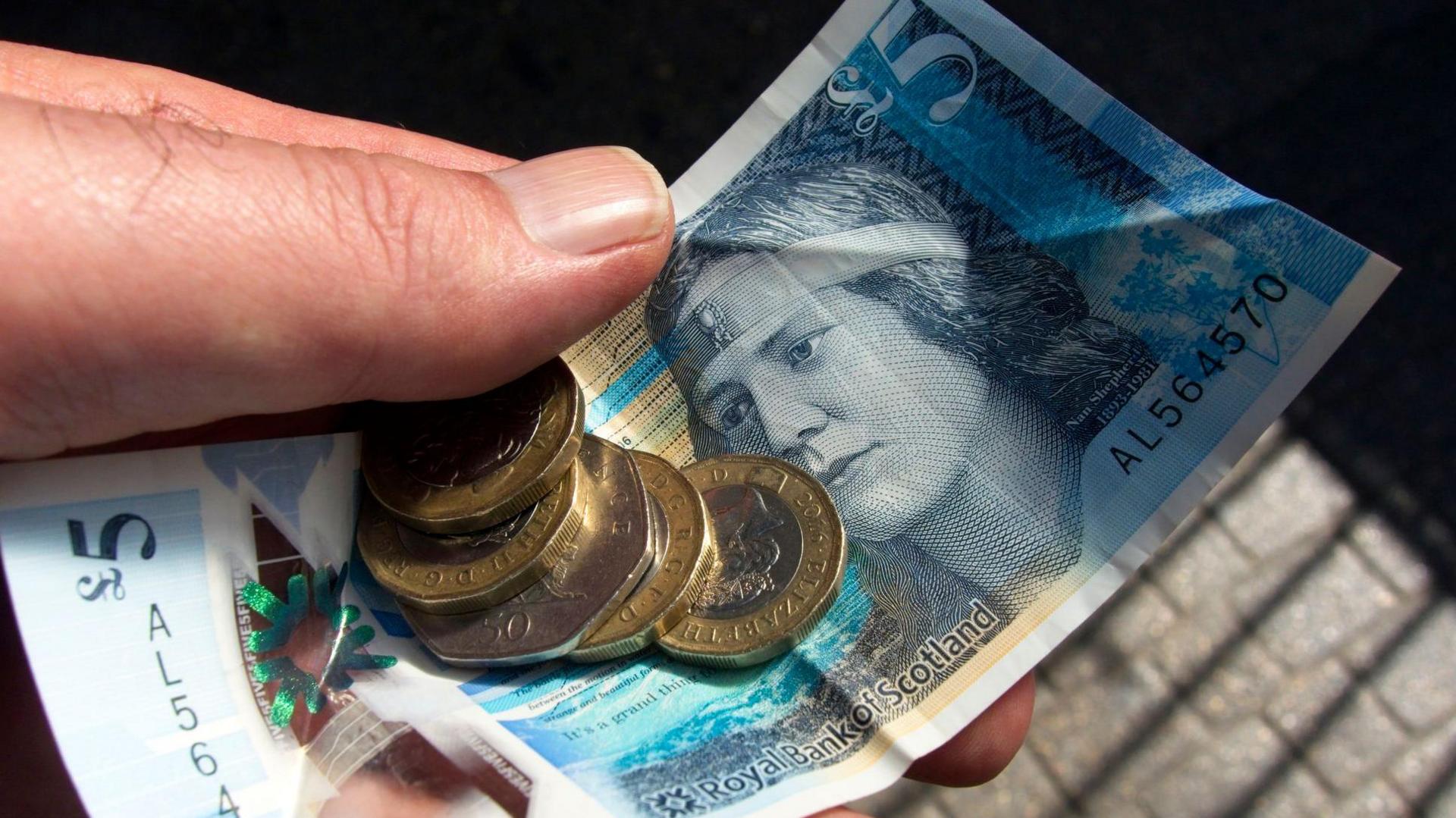What is Gers and how is it calculated?

The Gers report estimates the difference between what Scotland raises and what it spends
- Published
The Scottish government's latest Government Expenditure and Revenue Scotland (Gers) report has been published.
The annual report estimates the difference between what Scotland raises in taxation and what is spent on its public services.
This is known as the net fiscal balance, or some call it the "notional deficit".
It found the difference in 2024-25 was £26.5bn, which was up from £21.4bn in the previous financial year.
How did Gers come about and how has it been used?
The Gers figures were first published in 1992 under UK Prime Minister John Major.
Conservative ministers in the UK government's Scottish Office thought it would help inform the debate on devolution - or would at least help them make the case against the establishment of a Scottish Parliament.
Oil prices were low at the time and they thought the numbers would show how much more Scotland gained from the UK Treasury than it sent south in tax revenues.
Since devolution in 1999, the figures have been compiled by the Scottish government but there is still an annual battle to interpret the numbers from either side in the independence debate.
At the time of the independence referendum in 2014, the Scottish government's White Paper described Gers as "the authoritative publication on Scotland's public finances".
The SNP's Growth Commission blueprint for the finances of an independent Scotland also accepted the Gers figures as its starting point.
Meanwhile, opponents of independence have used the figures to point to a "Union dividend" - arguing that Scotland can only afford its relatively high levels of public spending because it is part of the UK.
Does Gers tell us what an independent Scotland would look like?
No. The Gers figures are not meant to be anything other than a way of showing the current position under the present arrangements.
Economists at the respected Fraser of Allander Institute, external say that Gers "presents a useful starting point for a discussion regarding the challenges and opportunities that Scotland would face".
And BBC Scotland's economics editor Douglas Fraser says: "One way of looking at them is to measure how big Scotland's deficit would be, if the country were to have been both independent and if its public finances were performing exactly as they did within the UK.
"It would probably perform rather differently if Holyrood pulled the tax, spending and borrowing levers in different ways to the Treasury in London.
"It could have pulled those levers in a smarter way, or left a bigger deficit.
"Everything around this is contested. But what can be said is that this helps illustrate the health or weakness of Scottish public finances."
How is Gers calculated?
The Fraser of Allander Institute has tried to explain how Gers is compiled, external by Scottish government statisticians.
It points out that data on the spending side of the equation is not estimated, but some UK spending is allocated to Scotland on a proportional basis.
The total spend is made up of Scottish and local government services and welfare spending, as well as UK welfare spending and pensions in Scotland.
It also includes UK government spending in non-devolved areas in Scotland such as defence, and allocates a proportion of the UK's debt interest payments to Scotland.
For revenues, there have been complaints that the data used is not collected for Scotland and has to be estimated from UK figures.
This can be tricky for North Sea oil and gas revenues, where the projects and the companies behind them are operating across both Scottish and English coastal waters.
A version without North Sea oil and gas revenue is also produced as this is often volatile, distorting the overall picture, and is expected to decline over time.
In recent years, the inclusion of Scottish income tax, council tax, business rates, the profits made by Scottish Water, landfill tax, land and building transactions tax and local authority user charges and fees have made this less of a problem.
There are other revenues - particularly those collected by HMRC - where estimation is needed.
The Fraser of Allander Institute says "estimates are not unusual in economic statistics".
And the Scottish government says that Gers is "produced independently of Scottish ministers and has been assessed by the UK Statistics Authority as being produced in line with the Code of Practice for Official Statistics.
"This means the statistics have been found to meet user needs, to be methodologically sound, explained well and produced free of political interference."
The Scottish government has published answers to a list of frequently asked questions, external about its Gers figures.
How does Scotland compare to the rest of the UK?
There are figures from the Office for National Statistics which provide a UK version of Gers, covering the regions of England as well as Scotland, Wales and Northern Ireland, though with a lot less detail.
The most recent cover 2022-23, and show Scotland is not the outlier.
In spending per head, Scotland is second top to London. It can be expensive to get things done in the capital.
In revenue raising, when Scotland was allocated its geographic share of oil and gas tax, it was third behind London and south-east England.
It was ahead of England and the UK as a whole.
The difference between revenue and expenditure, known as the net fiscal balance, suggests Scotland's notional deficit is bigger than most parts of the UK, but not as big as Wales, Yorkshire and Humberside, the West Midlands and, biggest of all, north-west England.
Only London and south-east England raise more in tax than is spent there by government.
Every year, there is redistribution of government funds out of the south-east and into the rest of the UK. The question then arises of whether it's sufficient.